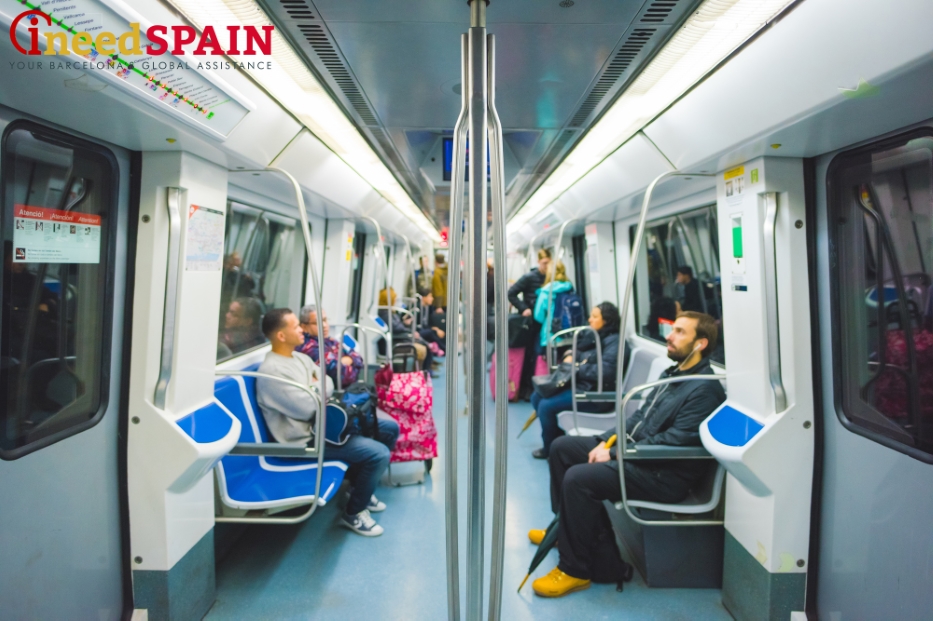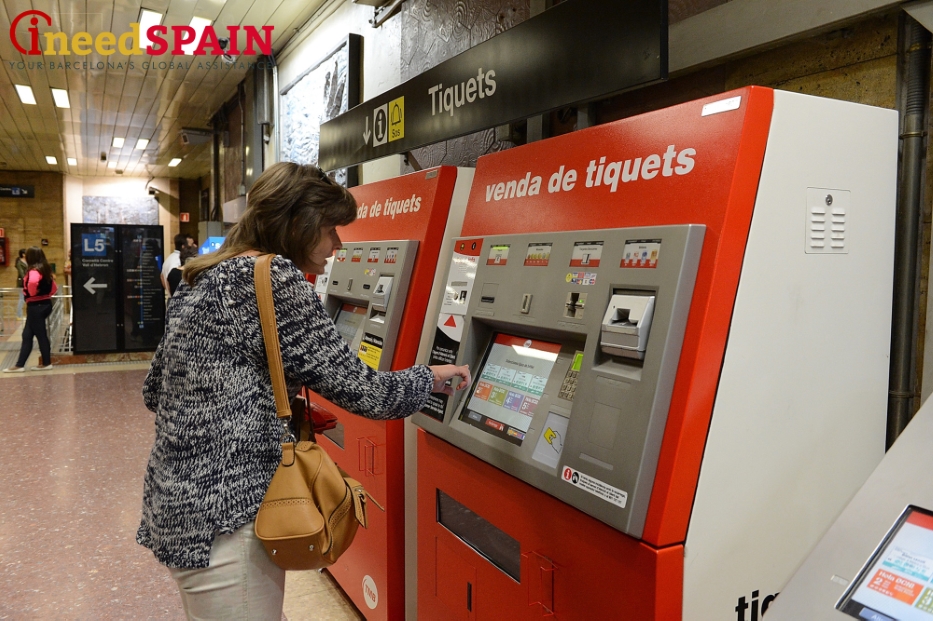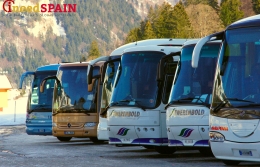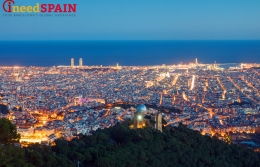
In Barcelona, as in any other large city, the metro is the fastest and the most convenient way to move around, especially if you are pressed for time and need to reach numerous destinations in a short time span. Both local residents and tourists regularly use this type of public transport. Accordingly, the annual passenger flow consists of more than 400 million people, and with Barcelona’s consistently growing popularity as a tourist destination, these figures are increasing steadily, too.
When considering the history of the metro of Barcelona, a curious detail stands out: the construction was carried out by two rival, private companies. The uniqueness of the situation is reinforced by the fact that the construction of an extensive transport infrastructure tends to be an initiative of city authorities rather than private companies. The construction began in 1924, when Gran Metropolitano de Barcelona began to build of a small portion of the project in the city center (the portion from Plaza de Catalunya to Lesseps metro station). Two years later, on the eve of the World Exhibition of 1926, Metropolitano Transversal finished constructing the second section connecting the two railways operated by the Spanish company RENFE.
However, this breakthrough start was followed by a period of stagnation: the Civil War in Spain halted all construction works. Construction was resumed only in the second half of the 1940s. In the 1950s, the city authorities decided to nationalize both transportation companies with the purpose of boosting the developing network.
The metro of Barcelona is one of the most popular in the world, due not only to its location, but also because of the unique concept with which the stations were designed. According to this design, every station features three platforms rather than the usual two, with one acting as an island platform. This innovative solution aimed to decrease the crowd inside the stations by facilitating passengers’ access to the train from both sides. It is clear that this solution was a major success. Starting in the 1930s, this concept acquired the title of “Barcelonean” or “Spanish” solution.
What does the Barcelona metro look like today? Below, you will find some of the key facts:
- Nowadays, the metro of Barcelona has 11 lines, 180 stations, 143 kilometers of tracks, and numerous projects in development with the aim of the metro network extension (including the projects of Lines 12 and 13);
- 8 metro lines are operated by the private company TMB and the other three lines by the railways of Catalonia. If you study the map of the metro of Barcelona in more detail, you will notice that not only are the metro lines depicted there, but also the line showing the funicular’s circulation (which is integrated into the metro network), as well as two tram lines (“Trambaix” and “Trambesòs”);
- The lines of the metro of Barcelona do not bear any names; they are marked by the last station on the line and by their different colors;
- The ninth and tenth lines of the metro of Barcelona are still in the process of construction. Although the project itself was started in 2000 and was expected to conclude by 2012, financial problems impeded the realization of the planned works. This ambitious plan by the Catalonian government was intended to construct the longest metro line in Europe, featuring 52 stations over 47 kilometers long. The objective of this initiative was to connect the center with the airport by means of the metro. It is now possible to reach the Barcelona airport by metro. Only one section of the line is out of operation (the portion from “La Sagrera” to “Zona Universitaria”), and its inauguration is planned for 2019;
- The metro of Barcelona is divided into 6 zones, depending on their levels of remoteness from the city center. The number of zones you plan to cover per trip directly affects the ticket price. Every zone, in its turn, is divided into “subzones” marked by Latin capital letters;
- According to passenger feedback, the disadvantages of the metro include an inconvenient system for changing trains. In order to transfer from one train or station to another, travelers very often must pass through two subway corridors. Moreover, the passages themselves are rather narrow, a factor that limits or slows passengers’ flow when changing train lines. Furthermore, since there is no air conditioning in these seemingly endless corridors, it can seem suffocating to remain there for a long time. The trains’ quality is inferior to the quality of the trains circulating in the metros of other cities; to open the doors of a wagon, the passenger must press a button or rotate a handle.
Metro of Barcelona and its working hours

First of all, it should be mentioned that the process for ticket purchases of any type in the Barcelona metro is totally automated. In every station, you will find plenty of terminals in which it is possible to buy different kinds of tickets as well as passes for multiple trips. Remember, ticket machines provide change in coins only. For this reason, it is best not to pay with large bills.
There are several main options when making a ticket purchase in the metro of Barcelona:
- One-time tickets for the Barcelona metro have different prices, depending on the number of zones through which you plan to pass. The prices for one-time tickets in the metro of Barcelona vary as follows: 1 zone — 1.45 euros, 2 zones — 2.10 euros, 3 — 2.90 euros, 4 — 3.90 euros, 5 — 4.95, and 6 — 5.80 euros. These tickets also can be used when travelling by two tram lines and by funicular, which are integrated into the metro network. The ticket validity period is 1 hour and 15 minutes. This is a rather convenient option for one-time uses of the metro;
- Another option is to buy a pass for 10 trips on the metro of Barcelona – a Т10. The peculiar feature of this ticket is that it can be purchased for any one metro zone. As a rule, this is zone 1, since all the key sites within the city center are located within zone 1’s limits. This pass is very convenient for tourists coming to the city for an average of 1-2 weeks. The Т10 is valid on RENFE trains and buses TMB 16, 17, and 46 as well.
- The purchase of a Barcelona Card is the most comfortable and budget-friendly variant for tourists. This card can be purchased for a period of 2-5 days and is a multi-functional tool, since it guarantees the free use of any transport within city limits, museum discounts, great offers for visiting the major landmarks of Barcelona, discounts in some restaurants, and special promotions on souvenirs. Along with the card, you will be given a city guide complete with descriptions of the city’s prominent tourist hubs. An adult can purchase this card for 18 – 54 euros (depending on the number of days for which the card is bought). The child’s tariff includes a discount.
The Barcelona metro’s working hours
|
Day of the week |
Lines 1, 2, 3, 4, 5, L9 and 11 |
|
Monday-Thursday |
05:00 - 00:00 |
|
Friday and holidays |
05:00 - 02:00 |
|
Saturday and December 31, June 24, August 15, and September 24 |
Around the clock |
|
Sunday |
05:00 - 00:00 |
|
December 24 |
05:00 - 23:00 |
“INEEDSpain” service center provides a wide range of services related to the planning and organization of private and group trips to Barcelona. Our specialists are always glad to provide you with a consultation regarding any question related to travelling to Spain, including questions about the city’s infrastructure, transport, major landmarks, and visiting regulations. “INEEDSpain” will help you organize your trip to Spain quickly and efficiently, with the results that are best for you!





